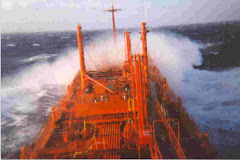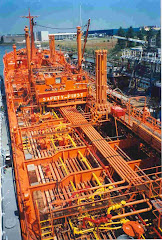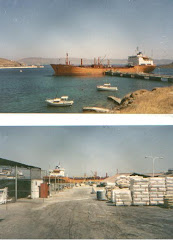The Macquarie Group (MIC) made a strategic decision in 2014 to acquire International Matex and enter into the liquid storage business. Liquid storage is an international business dominated by VOPAK and Oil Tanking both with a global presence of terminals in key hub locations, either direct investment or in joint ventures. Generally the share performance of MIC has disappointed compared to VOPAK. They are very different business models.
MIC owns, operates and invests in a portfolio of infrastructure businesses in the United States.
The heart of MIC is International-Matex Tank Terminals (IMTT). IMTT has ten marine terminals located on the East, West and Gulf Coasts and the Great Lakes regions of the United States, and two partially owned terminals in the Canadian provinces of Quebec and Newfoundland.
IMTT has a dominant market position in the New York Harbor and lower Mississippi River, which are two key port areas in the United States.
IMTT enjoys approximately a one-third market share for bulk liquid storage in the NYH (the largest terminal), and has approximately two-thirds market share on the lower Mississippi River with the St. Rose, Gretna and Avondale, Louisiana facilities.
They compete in the liquid storage business with Royal Vopak among others. VOPAK is the world’s leading independent tank storage company. They have a 400 year history and operate a global network of terminals located at strategic locations along major trade routes. MIC management is a relative newcomer to the liquid storage business, buying an existing operator with a 70 year history.
MIC entered on the surge of the US energy renaissance with increased domestic production. They have focused on the US regionally. Whilst liquid storage is a major part of MIC, their focus is portfolio investment in infrastructure and IMTT is only one of four business segments:
Atlantic Aviation: a provider of fuel, terminal, aircraft hangaring and other services primarily to owners and operators of general aviation (GA) jet aircraft at 70 airports throughout the U.S.
International-Matex Tank Terminals (IMTT): a business providing bulk liquid terminals,
MIC Hawaii: comprising an energy company that processes and distributes gas and provides related services (Hawaii Gas) and several smaller businesses collectively engaged in efforts to reduce the cost and improve the reliability and sustainability of energy in Hawaii;
Cntracted Power: comprising electricity generating assets including a gas-fired facility and controlling interests in wind and solar facilities in the U.S.
MIC had major earnings miss in February and reported that its free cash flow would likely decline by between 8 and 10 percent in 2018. It announced cutting its dividend by 28%. This resulted in a major share sell off over 40%. Since then its share value has not recovered significantly. In July, MIC entered an agreement to sell their Bayonne Energy Center for US$ 900 mio with a net proceeds of US$ 650 mio of which US$ 150 mio will be used to reduce their revolving credit facilities. MIC has a BBB- credit rating by S&P.
MIC has had a public dispute with MOAB Capital over debt levels and executive compensation. This happens in these cases of disappointing investor results.
VOPAK operates 66 terminals in 25 countries. It concentrates entirely on the liquid storage business. It has an AAA- credit rating by S&P and a much more consistent earnings results and dividend history than MIC.
The liquid storage business has had its challenges the last few years. Much of this has to do with declining occupancy rates in oil storage, which a major component for both IMTT and VOPAK. Oil storage is very sensitive to price arbitrage and oil futures. In backwardization pricing environment, there is little incentive to store oil. This year the rise in oil prices has restored contango and a better environment for storage.
Fuel oil remains an unsettled market with impending implementation of IMO 2020. The fuel importation market looks promising with structural deficits. VOPAK has invested heavily in LNG/ LPG storage in anticipation of future growth demand. IMTT has largely ignored this sector. It has a much larger exposure to refined products than VOPAK, which has a more balanced mix of products.
MIC is investing in a US$ 225 mio program to repurpose and reposition IMTT, leveraging IMTT’s privileged position to respond to market changes and capitalize on growth opportunities. By comparison, VOPAK is spending end maximum EUR 750 million on sustaining and service improvement capex for the period 2017-201 as well as an additional EUR 100 million in new technology, innovation programs and replacing IT systems including terminal management software in the US with the latest in cybersecurity.
I have always considered VOPAK a much better managed business than MIC. Of course they have different approaches and they are not entirely comparable. VOPAK is a dedicated international liquid storage provider. IMTT is a major part of MIC, it is a US liquid storage provider. MIC is invested in other infrastructure projects beyond liquid storage.








